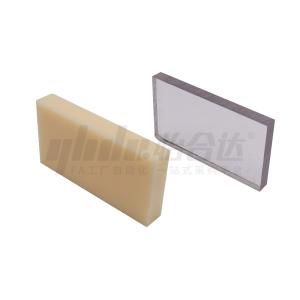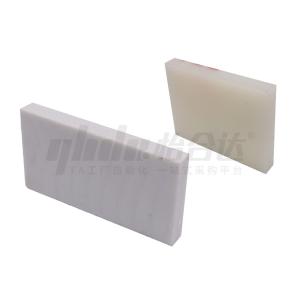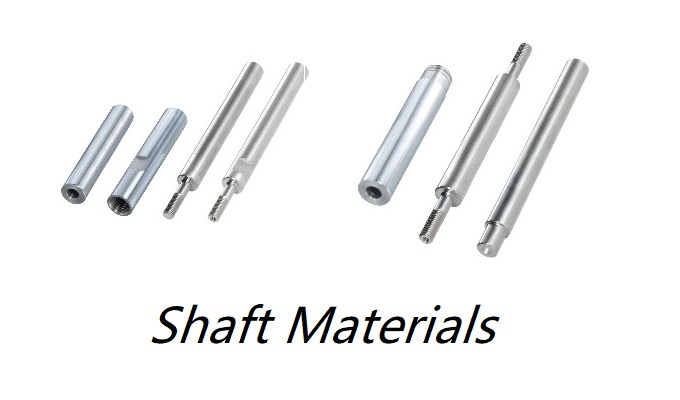Plastic is a moldable material. It is a kind of polymer material, and its main component is synthetic macromolecular compound, also known as synthetic resin. In order to enhance some properties of the product, certain additives are added to change its properties. So, what exactly is plastic, and how can we distinguish different types of plastic materials?
The earliest plastic appeared in the 19th century. People added camphor and a small amount of alcohol to natural cellulose to make artificial plastic. This substance is malleable and can be formed into various products under heat and pressure. It was named celluloid, marking the beginning of the history of human use of plastics. In the 20th century, polymer synthetic plastics began to emerge.
In terms of molecular structure, plastic is a polymer, which makes it extremely easy to shape. Literally, it can be understood as a moldable material. Especially under high temperature and high pressure, most plastics are extracted from fossil fuels. Petroleum and natural gas are the main raw materials, and they have become the perfect materials for making plastics.
The Manufacturing Process of Plastics
In daily life, we use plastic products of various shapes and sizes. The main production method of these plastic products is injection molding. In this process, three elements are required: plastic raw materials, molds, and injection molding machines. The injection molding process is to put the raw materials into the hopper of the machine, mix and melt them in the injection molding machine, and then fill the molds with the melted raw materials. The raw materials cool and take shape quickly in the molds, and finally, the molds are opened to take out the products.
There is another common processing method called blow molding. All kinds of plastic bottles, jars, barrels, etc. are made by blow molding. It is easy to understand that after the raw materials are melted, they are blown into shape in the mold.
The most intuitive difference between injection molding and blow molding is that injection molded products are solid-core, while blow molded products are hollow-core.
In daily life, more than 70% of daily necessities are plastic products. The main plastic materials among them are PP, PS, PA, PC, PE, ABS, and PVC. To distinguish them, we need to understand their characteristics and differences. Before getting to know them, we first need to understand what thermosetting plastics and thermoplastic plastics are.
Thermosetting plastics are plastics that need to be heated to cure during the processing and forming. That is, two different plastics are mixed and injected into the mold at the same time. Through the reaction caused by heating, single molecules are turned into a three-dimensional network structure. In other words, they are plastics that harden after being heated. The advantage is high heat resistance, and the disadvantage is that they are not easy to recycle. Examples of thermosetting plastics include bathtubs and tableware made of FRP material.
Thermoplastic plastics are plastics that will melt after being heated. That is, solid plastic particles are heated. After the plastic melts, it is injected into the mold. After the finished product cools and solidifies, the product is completed. The advantage is that the product can be recycled, and the disadvantage is that it is not heat-resistant. Examples of thermoplastic plastics are PE, PP, PS, PVC, ABS, PA, PC, etc.
PET (Polyethylene Terephthalate), with the code number 1, is also called polyester resin. The raw material is milky white or light yellow, with good transparency and no toxicity. It has the characteristics of high density, high hardness, and wear resistance, but it is not resistant to soaking in hot water and is not alkali-resistant. The service temperature is from -20°C to 65°C. If the temperature exceeds this range, harmful substances are likely to be released, and it cannot be used repeatedly for a long time. It is mainly used for beverage bottles and mineral water bottles in packaging materials, as well as casings and accessories in electronic appliances.
HDPE (High-Density Polyethylene), with the code number 2, is also called low-pressure ethylene. The raw material is white, non-toxic, and odorless. It has the characteristics of low density, good toughness, acid and alkali resistance, but poor aging resistance. It is difficult to clean thoroughly, so it should not be recycled. It is mainly used for packaging bottles of detergents, sheaths of wires and cables, etc.
PVC (Polyvinyl Chloride), with the code number 3, is also called adhesive film. The raw material is yellowish and translucent, with good transparency. It has the characteristics of high strength, good flexibility, and not being brittle easily. PVC can be divided into soft and hard types, and the difference between them depends on whether a softener is added. PVC itself is not toxic, but if plasticizers, anti-aging agents, etc. are added, it will be toxic. Therefore, soft PVC is non-toxic, and hard PVC is toxic. It is mainly applied to packaging materials, pipes, doors and windows in the building materials industry, etc.

PVC
LDPE (Low-Density Polyethylene), with the code number 4, is also called high-pressure polyethylene. The raw material is milky white, odorless, and non-toxic. It has the characteristics of good transparency, good softness, alkali resistance, but poor heat resistance. Its density is the lowest among all polyethylenes. When the temperature exceeds 110°C, it will melt and release toxic substances. It is mainly used for plastic food wraps, plastic films, etc.
PP (Polypropylene), with the code number 5, is also called polyflex. It has a relatively small density. The raw material has a transparent and light appearance, is non-toxic and odorless, and has high strength and elasticity. It is resistant to chemicals, collisions, and high temperatures of 100 to 120 degrees Celsius. It can be heated in a microwave oven, but it is prohibited to use recycled products to hold food. It is commonly used in plastic lunch boxes, water cups, food packaging boxes, etc. Because of these characteristics of PP, the currency of Australia is made of this kind of plastic.

PP
PS (Polystyrene), with the code number 6, is also called hard rubber. Its hardness is a little higher than that of PP. The raw material has high light transmittance, is colorless and odorless, and is easy to dye. However, it has poor toughness and is easy to be brittle. When the temperature exceeds 70°C, harmful substances will be released. It is commonly used in disposable foam lunch boxes, packaging linings, decoration materials, etc. Since it is not easy to recycle, it is gradually being replaced by paper materials.
PA (Polyamide), also known as nylon, has no code number. The raw material is non-toxic and odorless, has good toughness, is wear-resistant, heat-resistant, and resistant to chemicals. There are many varieties of PA plastics. Especially now, by mixing in various fiber materials, the various properties of PA plastics have been significantly improved, and it has replaced some metals. It is widely used in fields such as automotive parts, casings of household appliances, and protective equipment.
ABS plastic also has no code number. It is a synthetic product of acrylonitrile (A), butadiene (B), and styrene (C), also known as ABS resin. Therefore, ABS has the common properties of these three substances, such as impact resistance, heat resistance, low-temperature resistance, good comprehensive performance, low price, and wide application. ABS plastic is non-toxic, odorless, and its appearance is semi-transparent or transparent particles. Many parts of automobiles are made of ABS plastic, and parts of household appliances and office machines are also made of ABS.

ABS
Other types, with the code number 7, include acrylic, polycarbonate, polylactic acid, etc. The characteristics of these plastics are that they cannot be heated in a microwave oven, cannot be sterilized at high temperature, and cannot be directly exposed to the sun, because this may release bisphenol A, which will cause harm to the human body.
In fact, there are far more plastics than those mentioned above. There are various synthetic plastics. You may have heard of PBT (collectively called thermoplastic polyester together with PET), HIPS (impact-resistant polystyrene, that is, commonly known as engineering plastic), POM (thermoplastic crystalline polymer of polyformaldehyde), EVA (copolymerized from ethylene and acetic acid), and so on. There are too many to list here.
Buoyancy Test: It is to distinguish the material of plastic according to its density. Currently, for common plastics on the market without adding other components, their densities are all between 0.9 and 2.0 g/cm³. The density of water is exactly 1 g/cm³. Among common plastics, only the densities of PP and PE are less than 1.0. So, the plastics that can float on the water surface when put into water are PP and PE, and other plastic materials will sink to the bottom of the water because their densities are greater than that of water.
Combustion Test: If you want to distinguish various plastic materials more clearly, you can identify them by burning. The combustion test is to observe the characteristics and changes that occur during the combustion of various plastics, and then determine the material of the plastic. The states to be observed include the state after leaving the fire source, the smell of combustion, the color of the flame, the state after combustion, and the degree of flammability. The combustion test is completely a conclusion drawn according to the characteristics of plastics and cannot be used as a scientific basis for distinguishing plastics.
- When PET burns, it emits black smoke and has an acidic smell.
- PP can keep burning. The flame is yellow on the top and blue on the bottom, and it has a smell like that of a candle.
- PS can also keep burning. The flame is yellow with black smoke, and there are carbon residues after combustion, with a turpentine smell.
- After being ignited, ABS can burn rapidly and continuously. The flame is yellow with black smoke, and it softens without dripping after combustion, with a strong rubber smell.
- The flame of PE is yellow on the top and blue on the bottom. It softens and drips after combustion, with a smell like that of burning paraffin.
- PA is not easy to burn. It goes out when leaving the fire source. The flame is yellow with grayish-white smoke. It bubbles and drips after combustion, with a smell like that of sheepskin and nails.
- PVC is not easy to burn. It goes out when leaving the fire source. The flame is blue on the top and green on the bottom with smoke. It is difficult to soften after combustion, with an irritating sour smell.





